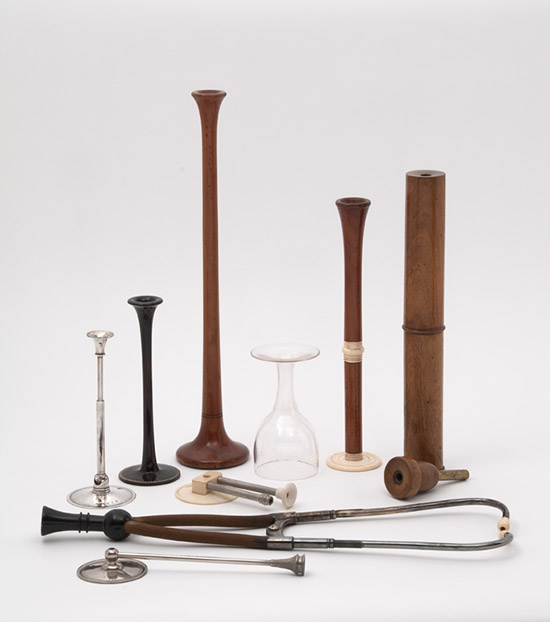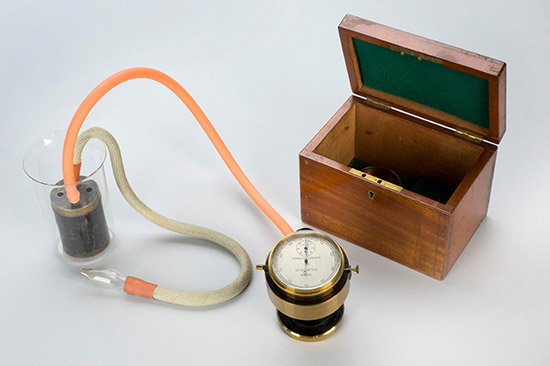The RCP museum exhibition Catch your breath includes several medical devices used to measure breath, breathing and lung function. Alongside a selection of stethoscopes a spirometer. Spirometers are used to diagnose COPD and other lung conditions by measuring how much air can be exhaled in one forced breath.

The results obtained from spirometry can seem satisfyingly scientific and objective. However, as Life of Breath researcher Dr Coreen McGuire has been investigating, these devices, like many medical technologies, have a chequered history. In order to define ‘abnormal’, scientists much first define ‘normal’. This typically means collecting a results from a large number of apparently healthy people. Coreen and other researchers (notably Prof Lundy Braun) have uncovered systematic bias and discrimination in the selection of these ‘healthy reference standards’.
For example, many modern spirometers oblige the operator to first input the ethnicity of the person being measured. This harks back to historic assumptions that people of colour had smaller lungs. Digging a little deeper, Lundy discovered that the supposedly ‘normal’ US population used to create the initial reference standards were poor with jobs and living conditions which we now know can have dramatic detrimental effect on lung function.

This is not only poor science, but it can have devestating personal consequences. Spirometry is often used to quantify lung function related to occupational lung disease. The lower norm for black people could mean someone is deemed ineligible for compensation even with the same degree of lung damage as a white co-worker. Read more about this in Lundy’s book ‘Breathing Race into the Machine’
Coreen has be researching the history of spirometry in the UK, particulalry its use in quantifying lung damage in miners seeking compansation for occupational lung disease. She is part of the panel at the free Life of Breath project event 'A matter of life and breath' at the RCP on Thursday 11 July.
Sarah McLusky, Life of Breath Project Manager
The exhibition Catch your breath is open free of charge 9am–5pm, Monday–Friday until 20 September 2019.
